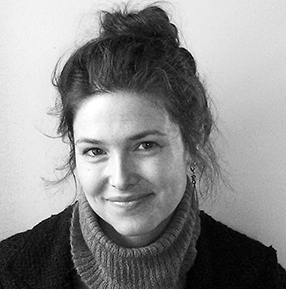Everything Is Autobiography and Everything Is a Portrait
Your body in motion calls me to look. You know just how to move. You are determined to move just so. If I could make my image of you do anything, what could I imagine myself becoming? Rather than painting on canvas or sculpting in clay, I am driven to put all these ideas on myself. The artist’s obsession with her subjects is all that I need to drive me to work. In Artemisia Gentileschi’s painting of Cleopatra, Cleopatra reclines, heavy-lidded, left hand limp on the pillow above her head. In her right hand, she clutches an asp. Is this the moment before she is bitten or just after? I want to know whether, at the moment of death, that first release will stiffen. In Danaë, her reclining figure echoes Cleopatra’s but Danaë’s left hand is limp with leisure, not surrender, while her right holds a fistful of the gold coins raining down on her naked thighs. Looking at this painting now, I don’t feel leisure. I don’t feel sex. I feel that I might stiffen and not be able to rise. Danaë’s legs crossed at the calves and pressing against the bed cause her back to arch so that the moment of her desire mirrors Cleopatra’s death. The figure retains energy, a tension that defies either weariness or leisure. I like to work from the people that I see and that I want to see. What is fabric to skin, skin to violence? Sometimes I’m concerned with using something that’s in them and which isn’t actually visible. I try to capture the figure where the sun has darkened the skin. But that isn’t the end of the neck. In Judith Slaying Holofernes, the light hits Judith’s neck only at the base. This space between neck and breast forms a plane of skin belted with light and I can’t look away. Not the bloody knife. Not the wide eyes of Holofernes. Nothing can hold my gaze beside this neck. Artemisia has used up her patience on the neck of Judith and left nothing for the head of Holofernes. I think I use up my patience working. I use my patience looking at the skin of Judith and cannot face the dull cheek of Holofernes. Is this personal? What I increasingly feel—that awful phrase “spiritual grandeur”—I feel it like the cap of a jellyfish behind my tongue. I think a skylight must have great spiritual value. Or in Artemisia’s self-portraits, what can we say about self as martyr and self as lute player? Artemisia moves her women to action and I see the painter avenging herself again and again. As I begin to make her portrait, I am conscious of the biographical. I know that I don’t want the body to be read as a violated body. In each of her self-portraits, the same face swivels toward us. And as a martyr, she looks calm; as a lute-player, she suppresses a smile. Through my intimacy with the people I portray, I may have depicted aspects they find intrusive. I have worked to make her appear three-dimensional, rounded. But in this one, done by night under artificial light, the figure looks greenish, bony. A thumb peeks out from between two fingers of her left fist. She dreams. She falls backward. Cloth fills my vision. And I think I’d like to bring, out of the abyss of her figure, all the illumination of arrival. The skin is teeming. The skin has such great spirit. An entire world of light is at play just under the skin. Your calves become Danaë’s calves at leisure, pressed against the grey felt in pleasure, and your bare shoulders could be Judith’s shoulders, broad and reflective under skylights. But as my eyes travel up, I realize you wear the wrinkled, gutted cheek of Holofernes’s half-severed head. Or you wear the same dropped countenance as the one who watches you. This image denies me body in motion, your buoyant bulk; instead, it offers a still life of skin, a cap of flesh traversed by waves of color and revealing the threshold of my own body. If I can catch a glimpse of my face reflected in the facets of the paint, in the mirror of your shoulder, I feel myself lost inside the body that I see. I see myself in this naked body and begin to dress. What I like best is preparing for the party. I often change the fabric completely. Getting ready to go, arriving late, skipping the party, there’s no difference really. It’s only important to do the work. I’m doing what I want completely. This is where I lie.
From Rayfish, published by Omnidawn. Copyright © 2017 by Mary Hickman. Used with permission of the author.

